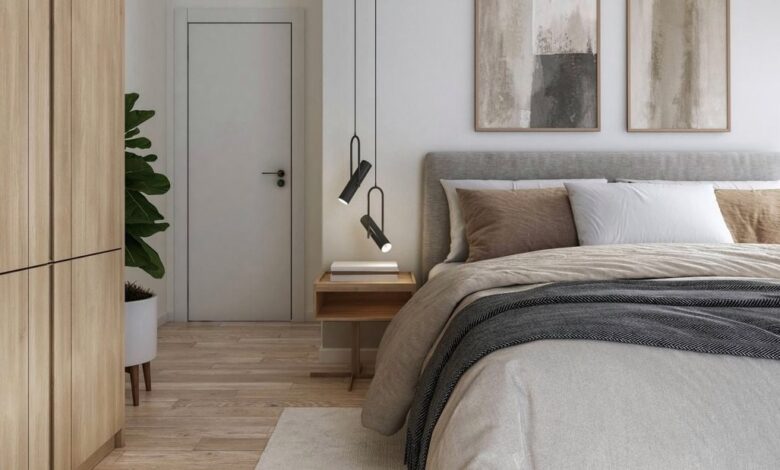A Winter Bedroom Refresh: The Bed Height Guide You Need

As winter approaches, many of us start to rethink our sleeping environment, seeking ways to enhance comfort and warmth during those chilly nights. One of the most important yet often overlooked aspects of a cozy bedroom is bed height. The height of your bed can significantly impact not just comfort but also accessibility and even the aesthetic appeal of your room.
Understanding how bed height affects your overall sleep experience is crucial for making the most of your winter bedroom refresh. A bed that is too high may expose you to drafts, especially if positioned near windows, while a bed that is too low can make it difficult to get in and out comfortably, particularly when you’re bundled up in layers of blankets. This is why knowing why bed height really matters can guide you in creating the perfect winter sanctuary.
In this blog post, we’ll explore the essential factors to consider when refreshing your bedroom this winter, focusing specifically on bed height and its impact on comfort.
The Importance of Bed Height for Comfort
The height of your bed plays a crucial role in overall comfort, especially as the temperatures drop. A well-chosen bed height allows you to sit comfortably on the edge while keeping your feet flat on the floor. Ideally, when seated, your knees should form a 90-degree angle. This ergonomic positioning not only enhances comfort but also minimizes strain on your back and legs when getting in and out of bed.
Moreover, a bed that is too high can feel cumbersome, particularly when you’re tired or trying to climb in while wrapped in blankets. Conversely, a bed that is too low may require excessive bending, leading to discomfort over time. Understanding how bed height influences comfort is essential for ensuring that you can enjoy restful nights during the colder months.
Accessibility and Mobility Considerations
Accessibility is another vital reason to consider bed height, especially for individuals with mobility challenges. If you or someone in your household has difficulty moving around, a bed that is either too high or too low can pose significant challenges. A higher bed may require a more strenuous effort to climb into, which could lead to falls or injuries.
On the other hand, a bed that is too low might make it difficult for individuals to sit up or get out of bed without straining their backs. Finding the right bed height can help ensure that everyone in the household can access the bed comfortably and safely. Adjustable beds are also an excellent option for those who need to customize their bed height according to their specific needs, making it easier to enjoy warmer nights as temperatures drop.
Impact on Sleep Quality
The height of your bed can significantly affect your sleep quality, particularly during winter when you might be spending more time indoors. A bed that is at the right height can enhance your comfort, making it easier to find a restful position. An uncomfortable height may lead to constant adjustments throughout the night, disrupting your sleep cycle and leading to fatigue.
When you sit on the edge of the bed, if your feet rest flat on the floor, it allows for better blood circulation and reduces the need to toss and turn. A properly elevated bed can also help you maintain a more ergonomic posture while sleeping, which can further contribute to restful nights. Understanding how bed height impacts your sleep quality is essential for maximizing comfort during the colder winter months.
Temperature Regulation and Bed Height
As winter arrives, temperature regulation becomes increasingly important for achieving a comfortable night’s sleep. The height of your bed can influence how well heat is retained while you sleep. A higher bed may allow for better airflow underneath but could also expose you to drafts if positioned near windows or vents.
Conversely, a lower bed can feel cozier and warmer, especially if it’s surrounded by thick rugs or layered blankets that help insulate against the cold. When considering your bed height, it’s crucial to think about the materials used in your mattress and bedding. For instance, memory foam mattresses typically retain heat better, making them ideal for colder months. Understanding how bed height affects temperature regulation can help you create a sleep environment that keeps you warm and comfortable all winter long.
Aesthetic Appeal and Bedroom Design
Bed height also plays a role in the aesthetic appeal of your bedroom. A well-proportioned bed can enhance the overall look and feel of your space, creating a more inviting environment. When designing your bedroom, consider how the bed height interacts with other elements, such as nightstands, lamps, and decor.
If your bed is too high, it may overpower other furniture, making the room feel unbalanced. Conversely, a bed that is too low may not command attention, leading to a less cohesive design. Choosing the right height can also enhance the functionality of your space, making it easier to access items stored under the bed or to incorporate additional storage solutions. Understanding how bed height influences bedroom design can help you achieve a harmonious look that caters to both comfort and aesthetics.
Tips for Finding the Right Bed Height
Finding the perfect bed height involves considering several factors, including your body type, age, and personal preferences. Here are some tips to help you select the ideal height for your bed:
- Measure Your Height: A good rule of thumb is to choose a bed height that allows your feet to rest flat on the floor when sitting on the edge.
- Consider Your Age and Mobility: If you or anyone in your household has mobility issues, aim for a bed height that minimizes strain when getting in and out of bed.
- Test It Out: If you’re purchasing a new bed, try sitting on it in the store to see how it feels.
- Use Bed Risers: If your bed is too low, consider using bed risers to achieve the desired height.
- Consult with Professionals: If you’re unsure, consult with a furniture specialist who can guide you based on your needs.
By following these tips, you can find a bed height that enhances comfort and accessibility, ensuring a cozy sleep environment throughout the winter.
FAQs
What is the ideal bed height for comfort?
The ideal bed height typically allows your feet to rest flat on the floor when sitting on the edge, with knees at a 90-degree angle.
How does bed height affect accessibility?
A bed that is too high can be difficult for those with mobility issues to climb into, while a bed that is too low may make it hard to rise comfortably.
Can bed height influence sleep quality?
Yes, the right bed height can enhance comfort and make it easier to find a restful sleeping position, positively impacting sleep quality.
What are bed risers, and when should I use them?
Bed risers are supports that elevate your bed. They can be used if your bed is too low for comfort or accessibility.
How can I maintain a cozy atmosphere in my bedroom during winter?
In addition to bed height, use thick bedding, soft lighting, and natural elements to create a comfortable and inviting atmosphere.
Conclusion
Understanding the bed height really matters for creating a cozy and comfortable sleeping environment, especially during the winter months. The right bed height can enhance your comfort, improve accessibility, and positively impact your sleep quality.
By considering factors such as mobility, temperature regulation, and aesthetic appeal, you can make informed decisions about your bedroom setup. Whether you’re adjusting your current bed height, purchasing a new mattress, or simply rearranging your space, taking the time to find the perfect height will lead to a more enjoyable and restful winter experience. With the right preparations, you can transform your bed into a warm retreat for those chilly nights ahead.


